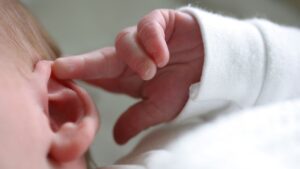SHARE WITH FRIENDS:
What can be done if a child has an earache?
The outer ear consists of the supra ear and the external auditory canal. The middle ear is made up of several cells located inside the temporal bone. The inner ear is called a labyrinth because it is more complex. The external auditory canal is covered with skin and is directly connected to the external environment. Normally, there are feathers (hairs) and earwax (sera) in the external auditory canal. Prolonged bathing in the pool (shower, pools) can cause water to enter the ear, causing the dirt to "suffocate" and cause inflammation of the skin or external diffuse otitis or inflammation of the hair follicles - earwax.
Earwax
Treatments
Washing the nasal cavity
Removal of foreign bodies from the ear
Removal of foreign bodies from the nasal cavity
Later, when the ear is "cooked", it ruptures, pus comes from the ear and hearing loss is observed. If the patient has diseases such as diabetes, allergies, vomiting, exudative catarrhal diathesis, mycosis, anemia, rickets, malnutrition, the disease can be more severe. External otitis can also be the result of ear bites, insect bites and bites, burns (thermal and chemical), and cold sores.
Prevention of earwax
To prevent the disease, the ear should be thoroughly dried with a napkin after bathing, and it is advisable to disinfect the ear by pipetting 3-4 drops of 5% boric acid. If there is pain in the ear, it is necessary to consult an otorhinolaryngologist. Inflammation in the nose and throat spreads directly to the middle ear. In infants, the reed is shorter, more horizontal, and wider than in adults. Therefore, a nasopharyngeal infection easily spreads to the eardrum cavity. Usually acute otitis media is observed as a complication of acute diseases of the upper respiratory tract (influenza), such as sinusitis, ARVI, ORK, influenza, adenovirus, rhinovirus, measles. The disease also develops due to adenoid vegetation, nasal obstruction curvature, chronic tonsillitis. In the treatment of acute otitis media, however, measures may not be effective without taking this into account. That is, first the nose should be treated, then the ear.
Complications of otitis media:
If proper treatment is not applied, the disease becomes chronic and a permanent (permanent) hole appears in the eardrum. In some cases, the child may develop severe complications such as mastoiditis (bone rot), paralysis of the facial nerve, meningitis (inflammation of the meninges), sepsis (microbial transmission to the blood). Such patients should be treated in a hospital setting. Adenoids and nasal obstruction curves are surgically removed.
Treatment of earwax
Given the development of the disease after the flu, we always recommend nasal drops in the medicine box for the nose in the house where the baby is growing: 1-2% protargol and 0,05% solution of naphthysine and ear drops: 3% boric acid solution . Nasal drops should be instilled into the lower nasal cavity with the head tilted back and sideways. In this case, as the drug flows through the side wall of the nose through the mouth of the ear canal, the permeability of the eustachian tube is restored, and the pus in the middle ear cavities exits naturally, without perforation of the tympanic membrane.
The ear should be put in an alcoholic solution of 3% boric acid using pliers. This alcoholic solution acts as a compress, improving the blood supply to the middle ear and reducing pain. The reduction in pain is observed by reducing the pressure of the pus in the middle ear. If pus is coming from the ear, it is best not to use boric acid. This is because the solution enters the drum cavity through a “hole” (perforation) in the drum membrane and is severely irritated. In the outpatient setting, nasal injections by a physician are very effective.
